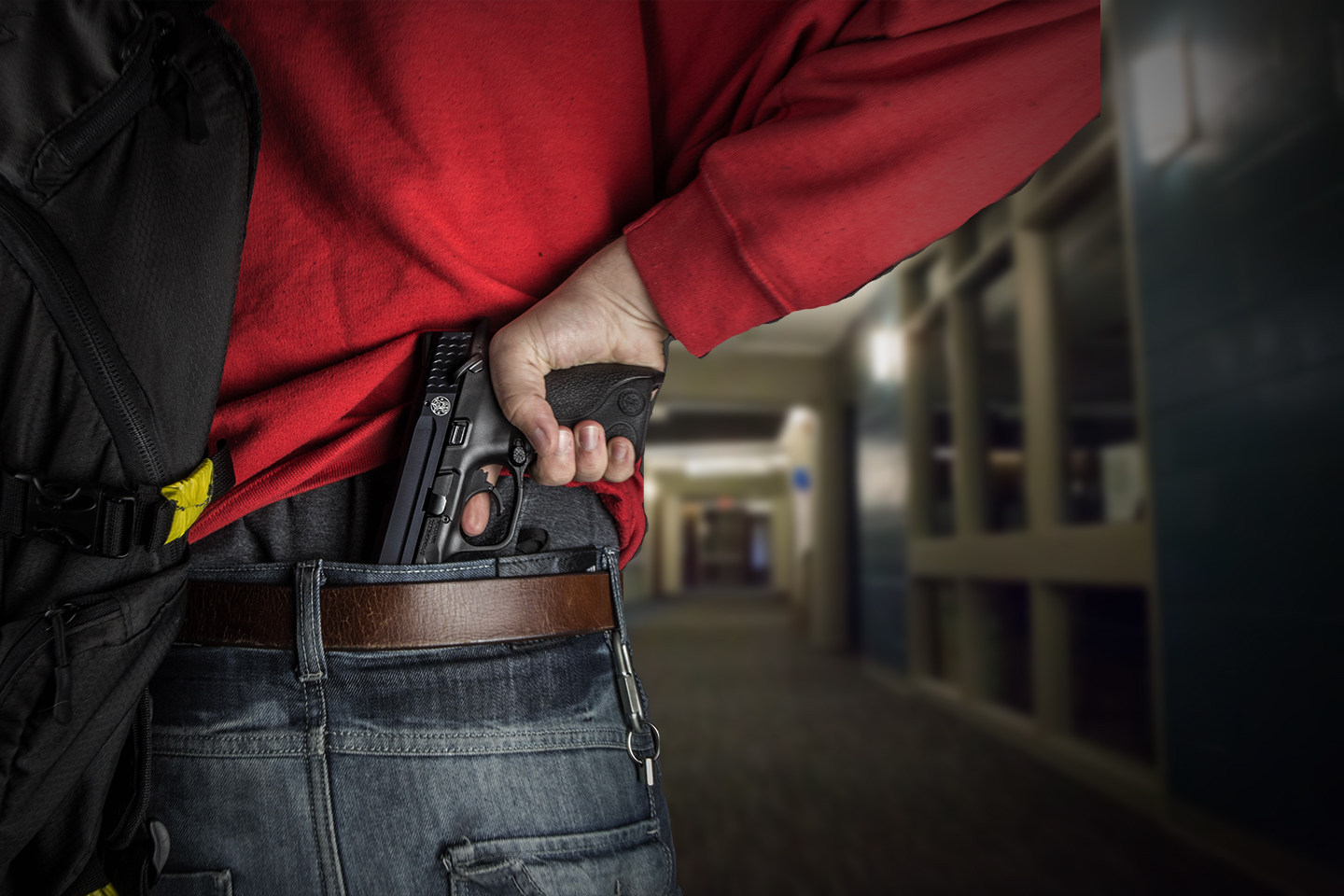Are You Safe? A Look at Active Shooter Preparedness at ICC
Are You Safe?
A Look at Active Shooter Preparedness at ICC
Mark Nycz
The first line of defense at ICC is the campus police. A highly trained team of men and women, armed with not only firearms but the training and tactics needed in an emergency situation. Leading the pack is experienced and veteran police officer, Chief Tom Larson. In response to the rise in school shootings, ICC teamed up with both the Department of Homeland Security and FEMA to provide a 3-day-training course…
On the cool Thursday night of November 19th, students at Illinois Central College had two things on their mind, exams that Friday and the weekend to follow. Unbeknown to the staff and students on campus, in the bathroom was a poorly written note with a veiled threat. While it turned out to be nothing more than an attempted to postpone exams, it brings to the forefront of the consciousness, that ICC, like any other school is vulnerable to attack.
The first line of defense at ICC is the campus police. A highly trained team of men and women, armed with not only firearms but the training and tactics needed in an emergency situation. Leading the pack is experienced and veteran police officer, Chief Tom Larson. In response to the rise in school shootings, ICC teamed up with both the Department of Homeland Security and FEMA to provide a 3-day-training course. This rigorous program paired emergency response teams, such as Peoria Police Department and EMT’s, to train alongside the leadership at ICC. Some of the top campus police from around the nation participate in this government sponsored program that is aimed at educating and training personnel on active shooter situations. Participants gain invaluable skills that help them to prepare for worst case scenarios on campus.
“Through involvement, you get exposed to knowledge and information which will lead to enhancing a person’s safety” says Chief Larson. “It was good preparedness training for the whole college, very successful”
One new tactic being offered by the campus police is a 3-step solution to respond during an active shooter called, Run Hide Fight. As outlined in Chief Larson’s video the steps are:
Step 1: Run. Anyone alerted to an active shooter on campus should get as far from the building as possible and seek shelter, till police have cleared the scene.
Step 2: Hide. In the event that running is not an option then the next step is to hide. Office workers should turn off the lights and seek shelter under a desk. Those in a classroom should close and lock all doors, students and staff should gather in a corner out of site from windows, shut off lights and mute cell phones, making as little noise as possible. Law enforcement or school officials will make an announcement over the school PA when it is clear to leave.
Step 3: Fight. When the first two options are not available, the last option is to fight. Law enforcement advises using whatever tools are around as a possible weapon to subdue the attacker; this is a last case scenario.
Long before Umpqua and Sandy Hook was Columbine, the high school massacre that brought school shootings into the forefront of the national consciousness. ICC Criminal Justice professor Nick Groff says that this shooting, with 15 dead and 24 injured, set the bar for law enforcement response to school shootings. “It changed the way police respond, up until that point it was a typical SWAT type response.” Says Graff “The problem with Columbine is that the shooting continued while the police were waiting outside, nobody went in to stop the shooters and additional students got killed.” Columbine ushered in a new era of dealing with school shootings and first response. The new approach is that law enforcement has adapted is to attack the problem head on, rather than attending to the injured or those trapped within the building.
With what seems to be a rise in shootings, people across the nation are looking for solutions and ways to not only protect themselves but also to put an end to this deadly and horrifying trend. A bill awaiting approval in South Carolina has one such solution, allow for teachers to carry firearms. If passed, this bill would allow anyone to be able to carry on campus once they have gone through the proper training. Those who have passed the training would be given the title School Protection Officers. If this bill becomes law it would not mean every school has to partake but a processes with the school board would help those select schools that want be part.
To some this idea seems like a simple and great solution but those trained in firearms and tactics know the dangers of such a bill. “Shooting is an acquired skill that has to be maintained and if you don’t maintain it you’ll lose your able to do it, then you become more of a danger, say’s Graff as he explains the only reason for such actions would be to use it as a deterrent for possible attackers.
Not everyone at ICC feels the same way; Manuel Garza is a student at ICC studying into Criminal Justice and supports the idea. “I wouldn’t mind it” he explains, “I feel having one in their desk or something like that would be beneficial for our safety.” To Garza, the idea of allowing teachers to carry is reassuring in the event an incident was to ever happen. Even the idea of allowing students to carry on campus is ok by, that is of course if those students don’t have any criminal backgrounds. “We are just as vulnerable as everybody else.” says Garza.
“Everyone should have the right to protect themselves” says ICC student Seth Lindsey as he passionately expresses his opinion on the idea of students being allowed to carry on campus. Lindsey is not your average college students, before attending ICC he was serving in the United States Marine Corp. During this time he was highly trained in the use of firearms and the safety that comes with operating one. Having students, such as Lindsey, on campus with concealed firearms may be one possible solution to the seamlessly never ending strike of shootings.
While there is no foolproof way to prevent these acts of violence, awareness and preparation can go a long way. “It can be easy to tune out the world and focus on your phone or your music but it is crucial to pay attention to what is happening around you.” This simple advice suggested by Professor Graff is with the hopes of reminding students to stay aware and report anything suspicious on campus. Staying vigilant can save lives.
In September of 2013 the Federal Bureau of Investigations released a 47-page document detailing a researched, in-depth report on active shooters. This study took in account 160 shootings and analyzed the facts about each one. The FBI discovered many unsettling facts including how such this attacks happen in locations both urban and rural and that such attacks occurred in a matter of minutes. Even in events where law enforcement was on scene, civilians had to make life and death decisions. It is times like these where the proper training of staff, and of law enforcement, is crucial and everyone must remember to RUN HIDE FIGHT.
See the video presented by the ICC Campus police here: RUN.HIDE.FIGHT

